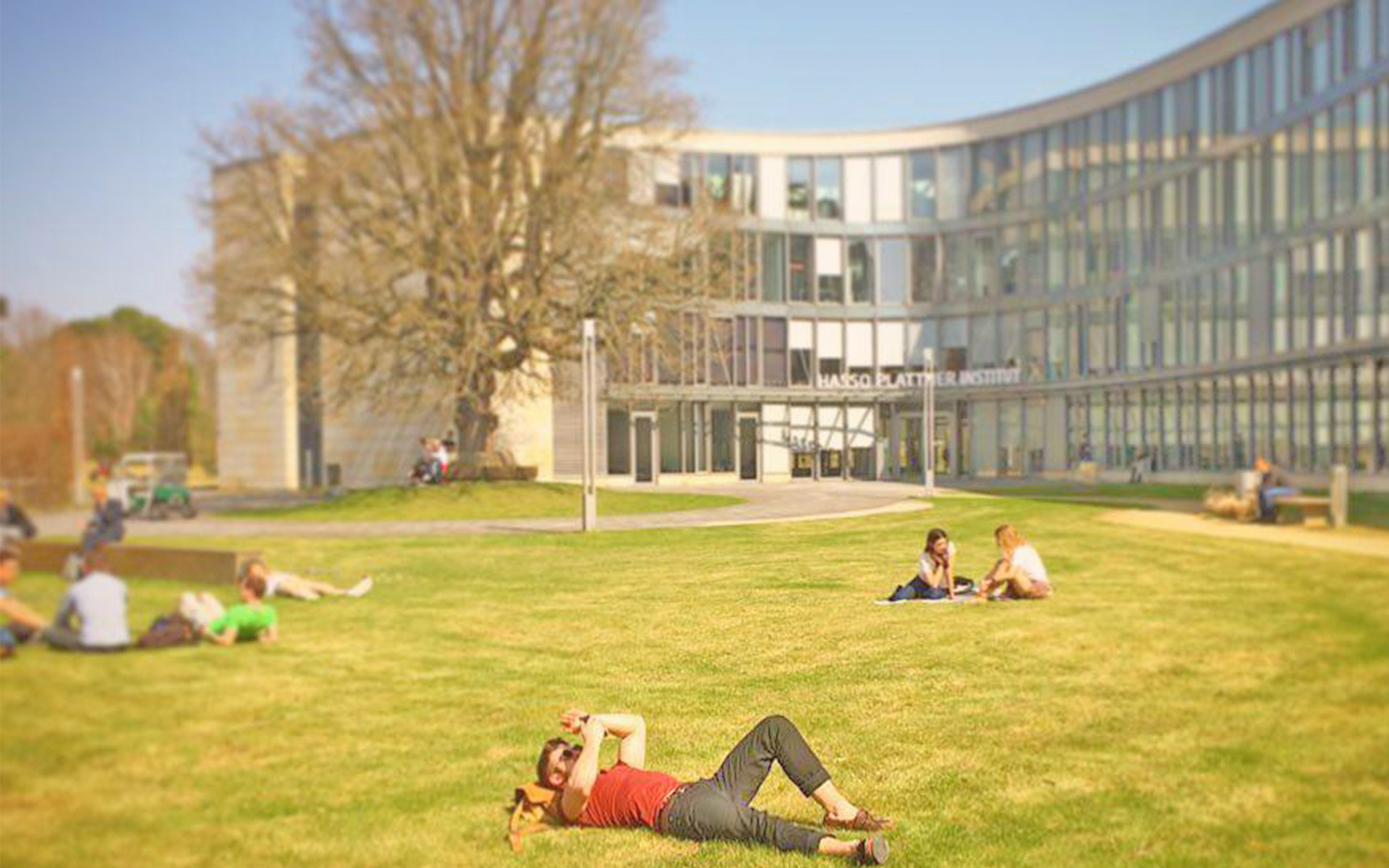Design Thinking for Digital Engineering (Sommersemester 2018)
Dozent:
Dr. Julia von Thienen
(Internet-Technologien und -Systeme)
Allgemeine Information
- Semesterwochenstunden: 2
- ECTS: 3
- Benotet:
Ja
- Einschreibefrist: 20.04.2018
- Lehrform: Vorlesung / Projekt
- Belegungsart: Wahlpflichtmodul
- Lehrsprache: Englisch
Studiengänge, Modulgruppen & Module
- IT-Systems Engineering
- HPI-MK Management-Kompetenzen
- Professional Skills
- Professional Skills
- HPI-PSK-ML Management und Leitung
Beschreibung
As digital engineers reinvent our every-day lives in the process of digital transformation, the world changes rapidly. This is a tremendous challenge and opportunity, for which many technology-centred engineering approaches provide only limited support. Often-observable limitations in design processes include (i) an unbalanced dedication of resources: beginning quickly with the development of whatever solution, skipping initial processes of understanding life domains and human needs that call for novel solutions; (ii) the use of rational-analytic tools in the design process only, neglecting the important role of personal experiences as prompts for better designs and (iii) an overreliance on coded representations of phenomena – such as verbal descriptions, statistical data or mathematical models – instead of working with real-life phenomena, whose ambiguity supports numerous viewpoints, each being a door towards different potential solutions. Design thinking is a holistic approach to innovation, both with regard to the process and the outcomes. In the creative process, means of reason and means of experiencing are used in conjunction to advance worthwhile innovations. Outcomes are generated that do not only expand humanities technical possibilities (feasibility) and open up business opportunities (viability), but aim at changing people's lives for the better (desirability).
Many design thinking classes provide practical introductions to the work approach; this lecture specifically conveys the theoretical background of why and how design thinking works. Participants are familiarised with design thinking research on behalf of the three "pillars" of creative work: (1) the innovation process, (2) people who collaborate and (3) creative places. Participants learn how to benefit in their own work from making better-informed choices in all three domains: with regard to the process they use, the collaboration strategy they pursue and the environments they seek out or actively design to support and advance their work. Moreover, two defining characteristics of innovation are discussed in detail: novelty and effectiveness. Participants learn about the challenges of developing novel solutions, as many audiences strongly prefer conventional (non-novel) ideas and innovation-attempts often encounter resistance. Participants also learn to assess the effectiveness of technological developments in design thinking frameworks, attending to user needs. All in all, the class provides an overview of design thinking research results and lets participants take part in current design thinking developments.
Voraussetzungen
-
Leistungserfassung
Two components inform the overall evaluation:
(1) active participation in the lecture, where in each session some time is dedicated for participants to work with the course content (40%),
(2) innovation models, which participants develop themselves and present in the lecture (mid-term presentation: 20%, final presentation: 20%, short model description: 20%).*
*If participants cannot take part in one of the presentation sessions due to illness or for other imperative reasons, alternative means of earning points will be made available.
Termine
9.4. Introduction to design thinking
16.4. Achieving original/novel solutions
23.4. Achieving effective/valuable solutions
30.4. Innovation as basis of culture development, and innovation resistance
7.5. Creative processes
14.5. Creative people
28.5. Creative places
4.6. Mid-term presentations of innovation models (by participants)
11.6. Case study: Tele-Board MED
18.6. Working with prototypes
25.6. Imagination and knowledge development
2.7. Strategic perspectives: curriculum design and project management
9.7. Combining design thinking and other development approaches in digital engineering
6.7. Final presentations of innovation models (by participants)
until Aug 31: submission of model descriptions (by participants)
Zurück

